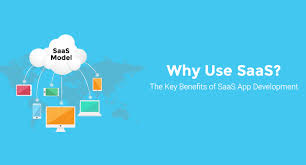In these difficult economic times, small as well as big businesses are looking at cost cutting and scrutinizing their basic expenditure. This includes cost cutting on manpower, office equipments and most important, the technology used. But to let business move on uninterrupted, organizations are constantly seeking more cost effective product development models.
This led to the evolution of the idea behind using “Software as a Service” (SaaS) where end-user access can be shared to reduce the cost and time of product development.
With time “Software as a Service” was popularly known as SaaS. It represents a method of using the software hosted by some companies and delivered to customers through a web browser on the Internet. With this, software hosted at a central location by its vendor can be made available to numerous users worldwide.
What is a SaaS Model?
SaaS model is a hypothesis of software deployment that includes providing a software application as a service to customers across the internet. SaaS model, therefore, can be considered as “renting” the software to global customers who can access it via the Internet.
SaaS model providers evaluate the existing business model to determine the feasibility of the SaaS model, build the product using right development techniques and design architecture, deploy the correct SaaS solution and market it through social media marketing techniques. Software users through a SaaS model get the benefit of subscription pricing, hosted delivery, and outsourced technical expertise. This way the end-users save on costs, and utilize latest technologies more effectively. A well-designed SaaS model also ensures users of cost-effective access to updates.
Advantages of SaaS Model
Companies that choose a SaaS model gain the following business benefits:
- IT infrastructure cost will be significantly reduced
- No need to purchase any software or hardware
- Business risks can be shared among users
- Rapid deployment reduces the installation or maintenance cost
- Hassle-free implementation at multiple locations
- No need of any additional hardware or software infrastructure support
- Capital expenditure is reduced as the subscription fees can be paid easily
- System can be accessed anytime, anywhere
- Easy access to comprehensive security, back-up, disaster recovery and support services.
When comparing the costs of a SaaS solution and a traditional, premises-based software solution, people often fall into the trap of simply comparing the subscription fees of the SaaS against the software license fees of the traditional system. The application license fee is only a small portion of the total cost to implement, customize, manage and support traditional software.
LTS provides a lower cost of ownership over software by offering SaaS model services. As one of the few leading companies that provide comprehensive SaaS solutions, the company offers easier migration to a SaaS environment as well as scalability.

